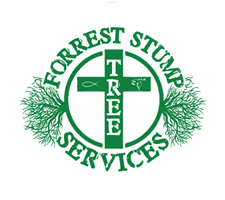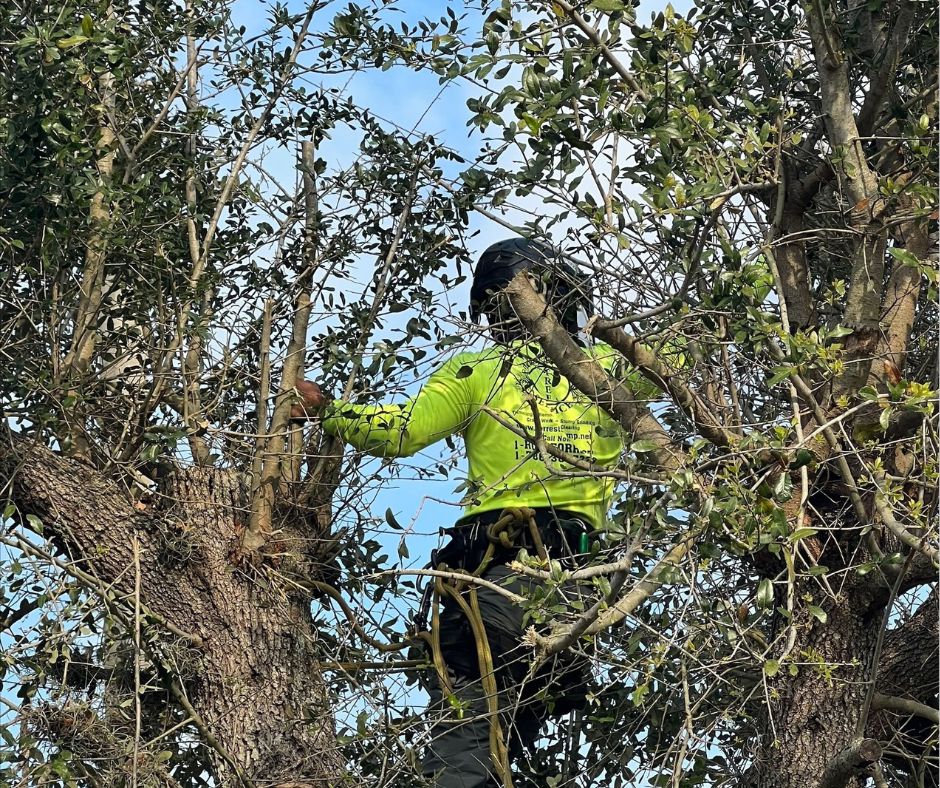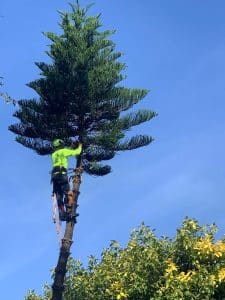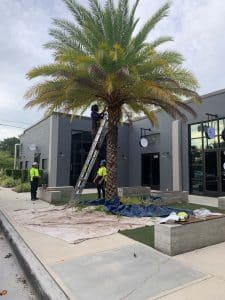In Central Florida, we all know hurricane season can be unpredictable. One moment it’s clear skies, the next—there’s a tropical storm warning. If you’re a homeowner in Winter Garden, now’s the time to take a good look at your trees and ask yourself: Are they storm-ready?
Tree trimming might not be the first thing on your fall checklist, but it should be. Properly trimmed trees are less likely to snap, split, or fall during heavy winds—and that means less risk to your home, your car, and your family.
Let’s break down the warning signs that your trees need trimming before the next big storm rolls in.
1. Overhanging Branches Near Your Roof or Driveway
If you’ve got long, heavy limbs reaching out over your house or driveway, they’re not doing you any favors during a storm. Strong winds can easily bring them down, leading to roof damage, broken windows, or smashed vehicles.
Regular tree trimming by a certified tree professional keeps your property safer and reduces the risk of major cleanup (or insurance claims) later.
2. Dead or Dying Branches
Deadwood is dangerous. It’s brittle, unpredictable, and one good gust of wind is all it takes to send it crashing down. Not only can falling branches hurt people or damage property, but they can also rip healthy parts of the tree with them.
If you spot branches that are bare, dry, cracked, or fungus-covered—don’t wait. Get them taken care of now.
3. Trees Leaning or Showing Signs of Structural Stress
While some trees grow with a natural lean, sudden or dramatic leaning may point to a deeper problem—like root damage or soil instability. These trees are more vulnerable to toppling over during high winds.
A professional tree assessment can help determine if the tree needs to be trimmed to rebalance its weight—or removed altogether if it poses a serious risk.
4. Thick, Dense Canopies That Block Sunlight
A full, leafy canopy might look beautiful, but when it’s too dense, wind can’t pass through it easily. Instead, wind pushes against the tree like a sail, making it more likely to snap or uproot.
Trimming the canopy thins things out just enough to allow wind to flow through without tearing the tree apart.
5. Signs of Insect Damage or Rot
Pests and decay weaken trees from the inside out, making them more likely to break or fall. If you see sawdust at the base, soft or spongy wood, or holes in the bark, it’s time to call in a professional. In some cases, targeted tree trimming can save the tree—other times, removal might be the safer option.
Why It’s Worth Acting Now
Tree trimming isn’t just about aesthetics or curb appeal (although it helps with that, too). In Winter Garden and surrounding areas, we trim for safety—especially with storm season in full swing. The earlier you address risky branches or unbalanced trees, the better prepared you’ll be when the winds pick up.
And remember: a professional trim doesn’t just protect your property—it can help your trees live longer, grow stronger, and stay healthier year-round.
Work With a Local Pro You Can Trust for Tree Trimming
At Forrest Stump Tree Service, we’ve been helping homeowners throughout Winter Garden and Central Florida prep for hurricane season for years. We know the trees in this region, and we know how to trim them for optimal safety—without compromising their beauty or long-term health.
Whether you’ve got one tree or a whole property full of them, we’re here to help.
Contact us today to schedule your tree trimming before the next storm shows up on the radar.





